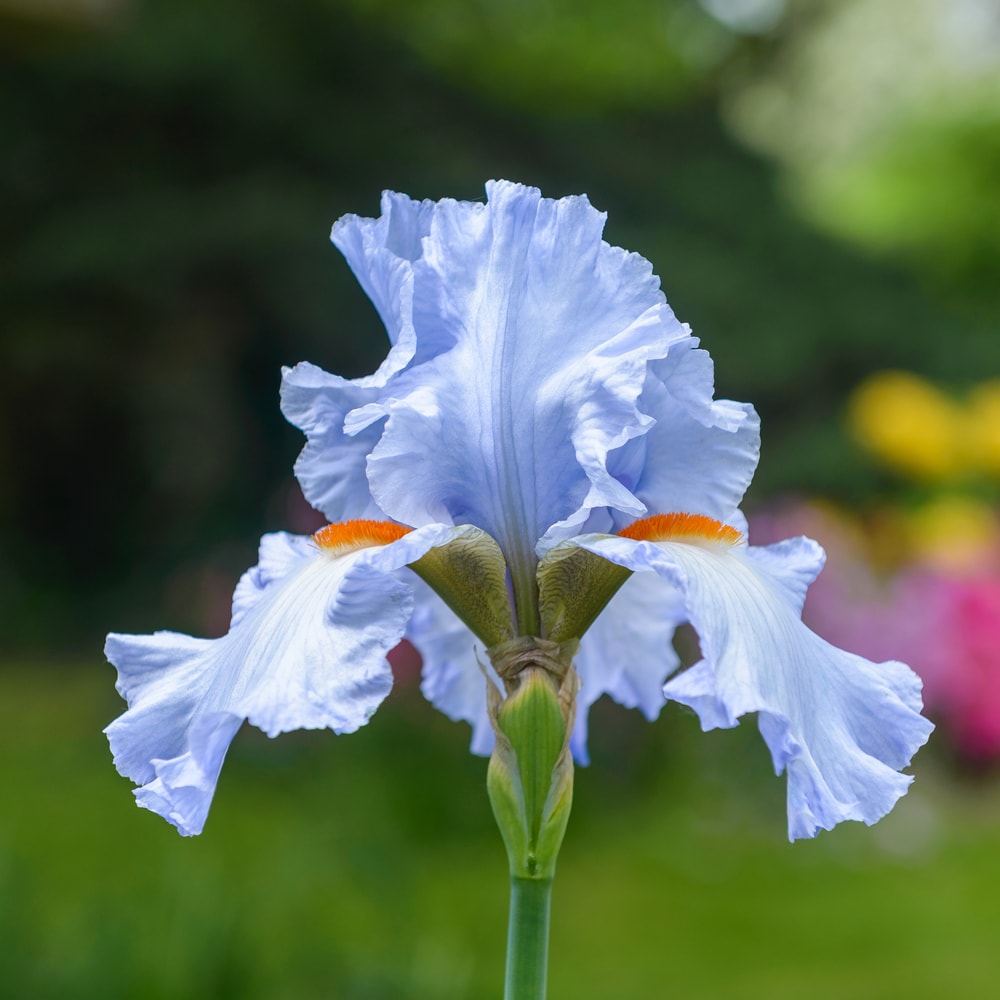- In Greek mythology, Iris was a messenger from the gods who traveled to earth on a rainbow. Wherever she stepped, flowers sprang up. Iris means ‘rainbow’—appropriate when bearded iris comes in a vast array of colors from pure white to purple/black—and nearly every color in between.
- The three upright petals on an iris flower stand for faith, wisdom, and valor.
- An extract from the iris, called Orris Root, is used as an additive to perfumes and is the most widely used fixative for potpourri. Orris is also an ingredient in some brands of gin.
- Irises are perennials and grow from either rhizomes or bulbs. Most irises are native to the Northern Hemisphere from Europe to Asia, though there are a few species native to eastern North America.
- Bearded irises are in the same family (Iridaceae) as gladiolus and crocus.
- Iris grows either from rhizomes (a creeping stem with leaves on top and roots below) or from bulbs.
Bulb Iris
Dutch irises are smaller than bearded irises so take up less space and are good for adding color where space is more limited. Miniature iris bulbs are also available in the fall—they’re far earlier (often blooming the same time crocus do) and daintier—about six to eight inches tall. Both Dutch and miniature irises come in around the first week of September and can be planted mid-October. Like bearded irises, they prefer full sun and well-draining soil. The bulbs go in about 4 inches deep, 4 inches apart.
Bearded Iris
Bearded irises are sturdy, easy-to-grow plants needing only a sunny spot and well-drained soil. They are available in late summer/early fall. Bearded irises have bigger, showier flowers than other iris. Depending on the variety, they will bloom anytime from mid-May to mid-late June and some varieties, called remontants, will bloom again at summer’s end.
Grow Your Own
To plant bearded irises, choose a sunny spot with well-drained soil. Bearded iris comes with roots and a fan of leaves at the top. Plant the stem with the root side down, but the top of the stem exposed to light and air. Top-dress lightly with Bulb-tone. Feed again in the spring, when they start to come up.
Non-reblooming irises don’t need much attention after they bloom except for a little water occasionally in periods of extreme drought. Keep all iris beds weeded and if you mulch, do not mulch over the top of the plant. Be sure to keep dead leaves or debris out of the bed as they can encourage rot. Irises are not plants that like in-ground sprinklers.
Reblooming Iris
There are bearded irises that bloom in the spring and again in late summer/early fall. If you have reblooming varieties, feed them after they bloom the first time and keep them watered over the summer—remembering to let them dry out partly. I plant my reblooming iris separately from my regular ones because once regular irises have bloomed, they can go drier and do not need to be fed again as the rebloomers do.
Grow a Rainbow
Not only are all iris tough, durable and perennial bloomers, but they are not generally bothered by pests—very important here in “Deer Country.”
Bearded iris rhizomes have just arrived at the store, so come in and pick out a rainbow…


Like seeing these little articles??
where are you from?
I was born in Richmond and grew up in Chesterfield County. My parents and both sets of grandparents were also native Virginians–one set from Patrick County, one from Halifax County. When I talk about gardening–it’s definitely about Virginia gardening!